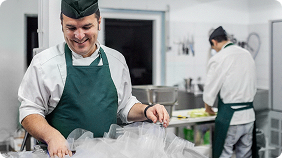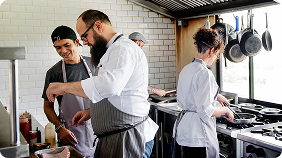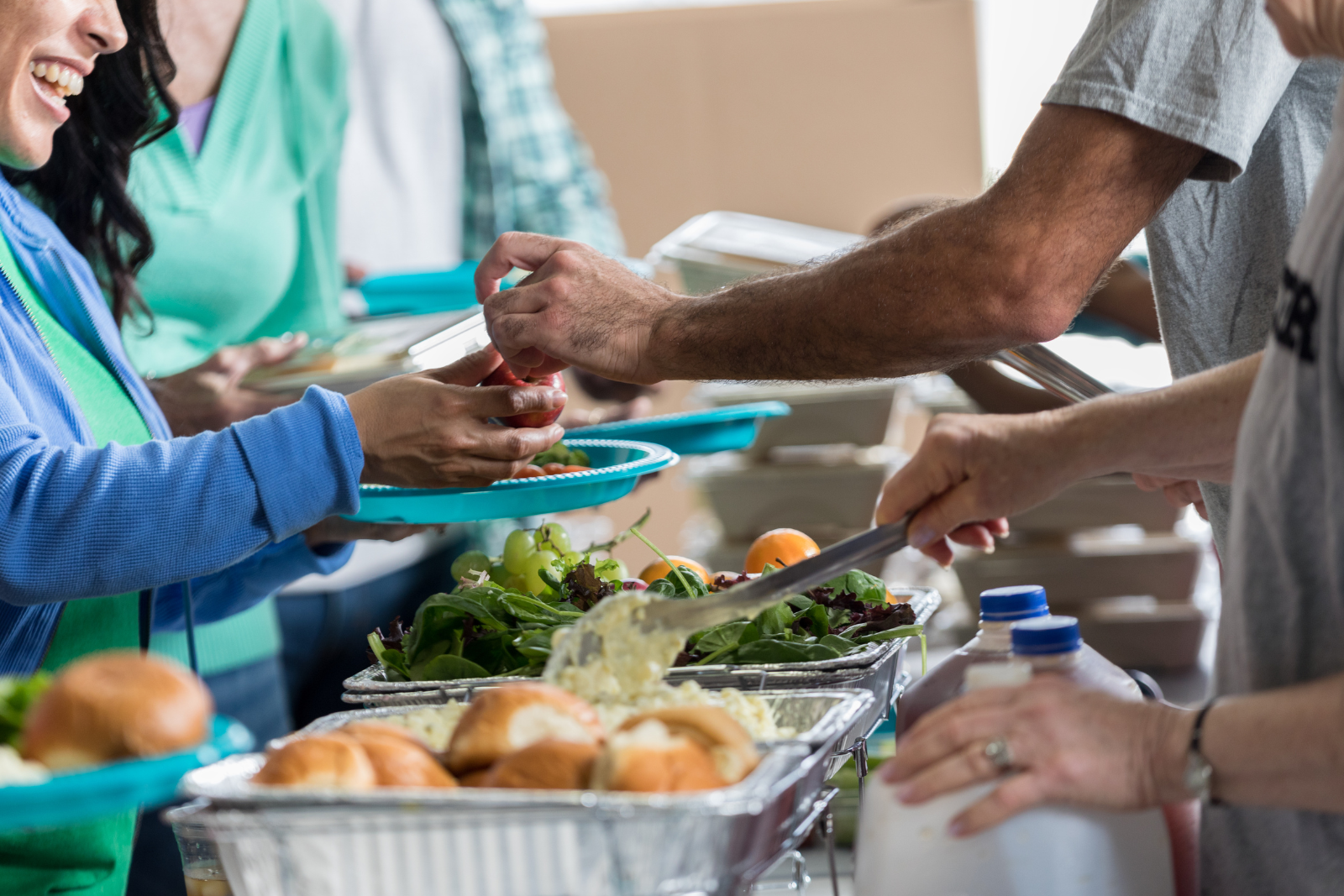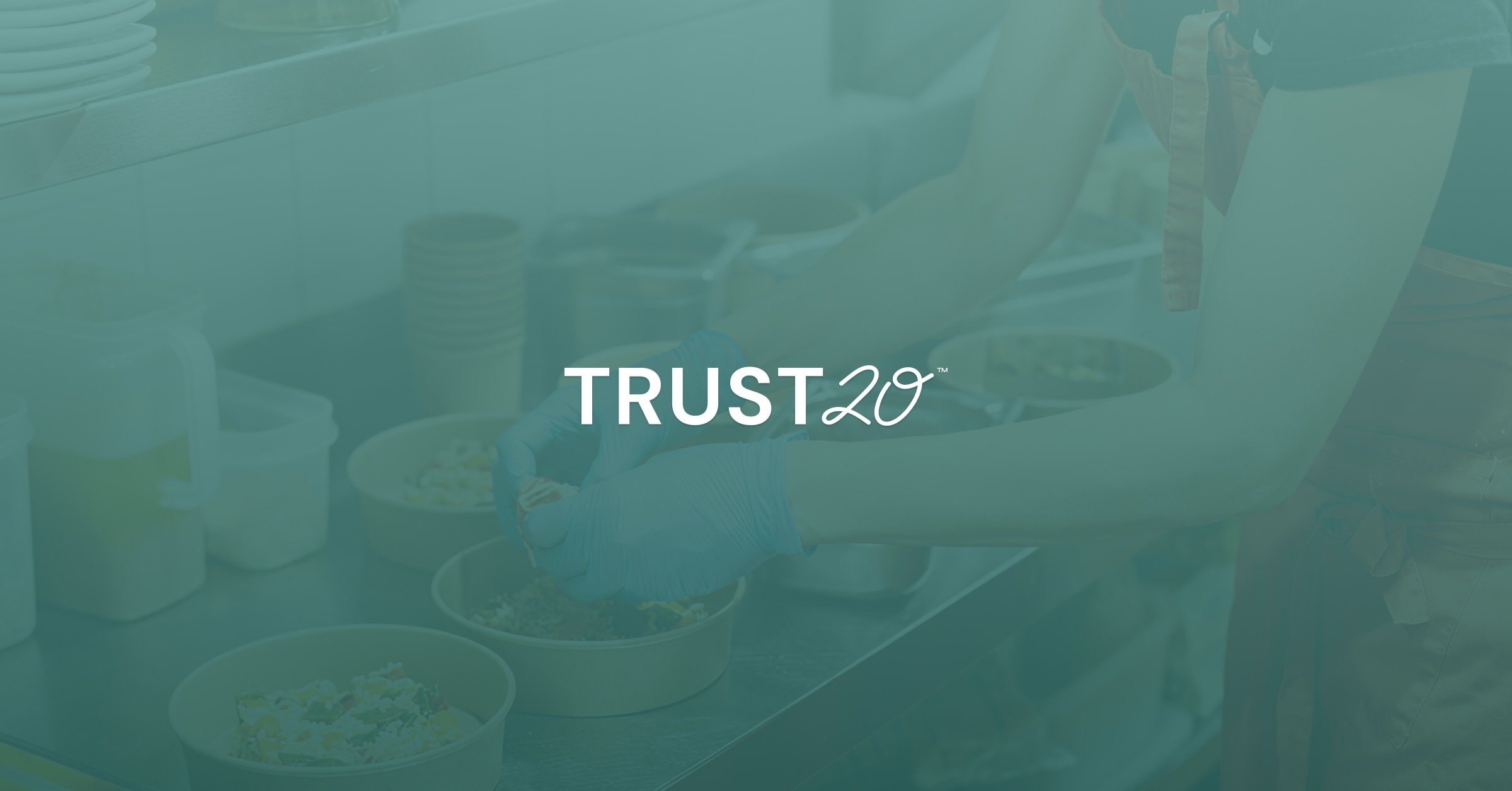The holiday season is one that brings joy to families, but it often comes with a price for restaurants. As people spend more time cooking at home, traveling, and taking part in holiday activities, restaurants may experience a significant decrease in business, sometimes seeing sales drop by up to 60%.1
Cold weather, traveling, and holiday activities are all factors that contribute to this decrease in sales for restaurants.2 This slow period in the foodservice industry can be discouraging for owners and employees, but there are some ways to combat this dip in sales.
Here are four strategies that can help your restaurant combat the "holiday dip," including:
1. Hosting events and activities
Live music or game nights (or even fun holiday parties!) are a great way to increase customers during this time. This will give customers an incentive to have a nice night out and a break from the stress the holidays can bring.
This can also be a great opportunity to provide the customers who attend these fun events with a special, limited-time offer to encourage them to come back ASAP!
Some other ideas:
-
Live Entertainment: Schedule live music, game nights, or trivia to create a lively atmosphere.
-
Holiday Parties: Host festive gatherings that encourage groups to celebrate at your establishment.
-
Holiday-Themed Events: Organize seasonal favorites like ugly sweater nights, gingerbread house contests, or New Year’s Eve bashes to attract holiday crowds.
-
Special Events: Offer exclusive experiences such as chef’s tastings, wine pairings, or themed dinners designed to draw in both loyal and new customers.
-
Pop-Up Activities: Surprise guests with limited-time pop-up stands or in-person experiences, such as a holiday hot chocolate bar or festive appetizer sampling.
-
Retention Offers: Use these events as an opportunity to provide attendees with special, limited-time offers. This encourages them to return quickly, boosting repeat business.
2. Offering gift card sales
What better gift than the gift of food? Offering gift cards during the holiday season gives people possible gift ideas for loved ones and generates sales for you.
Advertising this can attract any holiday shoppers looking for a gift. You can even make gift cards part of a special deal where customers can purchase multiple gift cards at a lower price.
Here are some ideas to help you market your gift card promos:
-
The Gift of Food: Position your gift cards as the perfect present for loved ones.
-
Target Holiday Shoppers: Actively advertise your gift cards to attract last-minute shoppers.
-
Volume Incentives: Create special deals where customers receive a discount for purchasing multiple gift cards or buying in bulk.
-
Streamline Sales: Use your POS system and online ordering platform to make purchasing gift cards quick and convenient for both in-person and remote customers. Promote digital gift card options on your restaurant website for added flexibility.
-
Holiday Marketing Campaigns: Launch targeted holiday marketing campaigns across social media, email, SMS, and your restaurant’s website to boost awareness of your gift card offerings. Highlight them as part of your broader holiday promotions to reach more new and loyal customers.
3. Preparing meal kits
Cooking is a big stressor for some people during the holidays. You can provide a simple solution for those who may not have the time, access, or know-how to prepare their own holiday meals.
Creating meal kits with simple instructions and/or only require reheating is a win-win for you and hungry families!
You can make special holiday menu meal kits featuring favorite menu items or limited-time holiday offerings, or boost takeout sales by offering meal kits and additional holiday menu selections for easy takeout or curbside pickup.
Go one step further: encourage upselling by including optional appetizers, desserts, or drinks as add-ons with each meal kit purchase.
Giving your community this option creates loyal and appreciative customers that are sure to come back again and again.
4. Improving marketing efforts
With all these ways to improve your business, you need a way to get the word out. Good marketing strategies are the most effective way to keep sales afloat. You can create posters to put outside your restaurant or advertise on social media.
Creating social media accounts on platforms like Instagram, Tik Tok, or Facebook are great ways to reach your target audience and connect with them.
And of course, an email newsletter can communicate directly to your loyal customers and include direct links to sales, menu changes, and the latest promotions and announcements.
Create an outstanding dining experience at any time of the year
Slow periods may be a stressful time to look at your bottom line, but they are also an opportunity to find ways to connect with your customers in new or different ways and show your appreciation for all the hard work your employees have put in this year.
Some adjustments may be challenging, but staying relevant and listening to the needs of your customers will help you reap many rewards in the long run.
You can stay top of mind through the holiday season and into the new year when you think outside the box and use some of these strategies in planning for your business.
FAQ
What are effective strategies to boost restaurant sales during the holiday season?
Incorporate limited-time holiday menus, run festive promotions and a robust gift card program, streamline your online ordering system, and leverage social media and SMS marketing to reach potential new customers. Hosting holiday parties and special events, upselling appetizers and add-ons, and rewarding loyal customers with holiday-themed loyalty programs can also drive sales.
What is the best promotional strategy for the Christmas season?
Offer holiday specials and limited-time offers such as prix-fixe holiday meals, gift card bonuses for spending thresholds, or holiday takeout packages. Combine this with themed marketing campaigns, eye-catching social content, and collaboration with local businesses to increase reach.
What is the "12 Days of Christmas" marketing strategy?
This approach offers a different special, menu item, holiday-themed event, or promotion each day leading up to Christmas. It encourages daily engagement with guests and creates ongoing excitement around your restaurant’s brand.
How do I manage staffing during the busy holiday season?
Plan ahead by posting holiday shifts early, offer incentives for staff working peak times (like New Year's Eve), and cross-train team members for greater flexibility. Clear communication and appreciation go a long way in retaining team morale when business is at its peak.
Sources:
-
Advanced Funds Network: Seasonal Factors that Affect the Restaurant Industry






.png)

.png)
